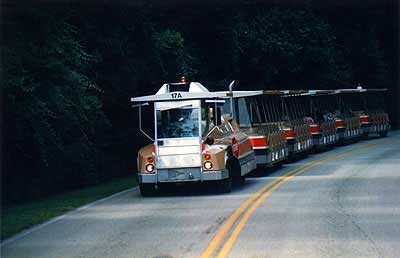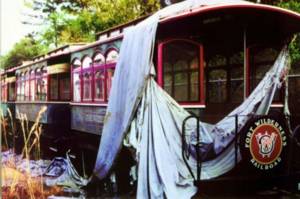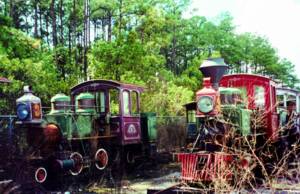THE FALL


Another problem was the small amount of water the saddle tanks could hold, only 225 gallons, which is not much considering the 3 1/2 mile trip the engine had to make. There was only one water tower at the Gateway depot. The employees running the train had to be very diligent about filling the saddle tanks with water every trip or else the train would run out of water mid trip. This was forgotten at times, and resulted in stranded trains. The trains were fitted with a auto-shutdown device, so when the boiler level dropped to a certain point, the train automatically stopped to prevent a dangerous situation. This was necessary because Disney made another bad decision by using employees who were ride operators to run the Wilderness trains, so someone who was running Dumbo the day before was now operating a steam train. Anyone who has operated a steam engine (of any size) knows they are temperamental, require a lot of attention, and are not fool proof.
In 1976 River Country opened and the trains limited capacity was quickly realized. Trams, like the ones used in the them parks to transport visitors from the parking lot to the park entrance, were put into action. People preferred the trams as they were faster than the trains.
Another possible problem was the train route location. The train tracks snaked through the campground, often within a few feet of campsites. The train ran dangerously close to campers. There was no beam, ditch, or fence to keep adults and children away from the tracks. The route also crossed 9 streets during it's 3 1/2 mile journey.
Sometime around 1979, Disney management made the decision not to put any resources into maintaining the Fort Wilderness Railroad. Within months the railroad came to a halt and trams took over all the transportation of guests

The trains were stored in the train barn, and the tracks remained at Fort Wilderness until sometime around the mid 1980s. At this point all the trains except the #4 engine and 5 coaches, were moved to outside storage and covered with tarps. Soon the #4 engine and coaches joined the rest of the trains, the tarps ripped, and the trains spent many years exposed to the elements, rusting and rotting.
NEXT: A New Life -->